La Sagrada Família
While in Barcelona we spent lots of time being amazed by architecture from the brilliant and very religious Antoni Gaudi. La Sagrada Familia is the grand finale, and grand doesn’t even begin to cover it!
Click on the first photo in each group and scroll to see the square photos at full size.
To start at the beginning of this series, visit Mediterranean Cruise.
Our Fabulous Grand Finale
For the grand finale of our fabulous Mediterranean Cruise, we saved the very BEST for last. The Basílica i Temple Expiatori de la Sagrada Família was a sight to behold. Everyone we knew who had been to Barcelona, and everything we read in preparation for the trip – all said it should not be missed – so we decided not to miss it.
Since we had no idea of the timing of our days in Barcelona, we were afraid to get our tickets early and decided to be more spontaneous on this one. When you go, don’t be spontaneous on this one – get your tickets and avoid the lines because they are literally hours long. I had read that lines are longer earlier in the day and once we arrived and realized “they” were right, we took the bus up to Park Güell and came back in the middle of the afternoon. They weren’t short, but they were shorter and since we didn’t want to miss this, we waited it out… in the heat of the day… without even getting too crabby, because we knew the wait would be worth it.
From a distance it was quite a sight. Massive and spectacular and in its 133rd (142nd) year of construction (since 1882), so scaffolding, netting and cranes clutter the views.
The Holy Family
Devoted to Jesus, the Virgin Mary and Saint Joseph, the church was named Sagrada Familia (the Holy Family). The Nativity Facade (picture above center) was the only facade that was completed before Gaudi’s death in 1926. Said of the Nativity Facade: “It’s the Bible written in stone.”
“Antoni Gaudi was profoundly devout and this was his way to make amends to God for the sins of the modern world… He wanted to write the history of the whole of the Catholic faith in one building.” Is it absolutely stunning and quite an undertaking! Since Gaudi knew it would never be finished in his lifetime, he spent years making plaster models to help future generations of architects follow his complicated designs.
“Color is the Expression of Life”
Our wait was finally over and in we went. The ceilings towered above us, the sunlight streaming through the stained glass filled the space with beautiful shades of color. I was expecting a more rough interior, but instead it was white and smooth and absolutely fabulous. We stood in awe. Looking up at its beauty, my eyes welled with tears.
“Gaudí said that colour was the expression of life, which is why he decided to make its presence felt in the Sagrada Familia.” Countless people have dedicated their lives to bringing Gaudi’s vision to this point – and will see it through to completion. Visit this video for a time-lapse video of what La Sagrada Família will look like when complete. Shall we plan our next visit to Barcelona in 2026?
“The Expiatory Temple of the Sagrada Familia is a church with a central nave flanked by four aisles, and transepts with a central nave flanked by two aisles, forming a Latin cross. The top of the cross is closed by the semi-circular apse. The basilica also has three monumental facades, each one representing one of the three crucial events of Christ’s existence: his birth (C/Marina); his Passion, Death and Resurrection (C/Sardenya); and his present and future Glory (C/Mallorca).
The design will be completed with four domed structures, some 40 metres high, sited at each corner: two sacristies on the northern side; and on the southern side the baptistery and the chapel of the Holy Sacrament and Penitence. These four constructions and the three facades will be linked by a wide, covered corridor, with a double wall, referred to as a cloister by Gaudí, which will insulate the central nave from noise from the street, and allow circulation from one building to another without the need to cross the main nave.
18 Towers Represent the Apostles
Gaudí’s plan was for a group of 18 towers: 12 shorter ones on the facades (bell towers which will be 100 metres high, representing the Apostles), and six taller ones in the centre in a pyramidal layout reflecting the hierarchy of their symbolism. Of these, the tallest will be the one above the central crossing, representing Jesus Christ, reaching 172.5 metres in height. It will be surrounded by four, slimmer, 135-metre-high towers representing the four Evangelists and their Gospels A further tower will cover the apse and will represent the Virgin Mary.
Gaudí wanted to construct a building that would make an impact on the skyline, but also show his respect for the work of God, which in his opinion should never be superseded by man: at 172.5 metres tall, the Sagrada Familia is one of the tallest religious buildings in the world but remains a few metres below the height of Montjuïc – the highest point in the municipality of Barcelona.” – READ MORE
More Sources of Information
For a wonderful “virtual view” of the cathedral, please click here. Be sure to steer the arrow up and look at the ceiling. It really is breathtaking. I have visited almost every tab on the website above. The pictures and insight into the design and construction are incredible.
There is also a wonderful 60 Minutes episode called “God’s Architect: Antoni Gaudi’s Glorious Vision” which tells more about the dedication of Gaudi and his successors, workers and sculptors. “The ceiling is a striking display of Gaudi’s engineering genius. He wanted the interior of his church to have the feel of a forest, because that’s where he believed man could feel closest to God. And when you look upwards, you can see Gaudi’s columns branching out like trees.”
Great Doors at the Passion Facade
Its great doors at the Passion Façade entrance (pictured above), are printed with words from the Bible in various languages. Several words, including “Jesus” were meant to stand out. Josep Maria Subirachs, a Spanish sculptor and painter, made a plaster model of the doors that would then be cast in bronze. He also created the bronze statue of Saint George (pictured above right).
Will it be Complete in 2026?
“Although the building is set to be complete by 2026, work on sculptures and decorative details and, above all, the controversial stairway leading to what will eventually be the main entrance, is expected to continue until 2034.” ~ READ MORE (updated in March of 2024)
The grand finale of our grand finale is the absolutely stunning crucifix that is suspended above the altar and the organ pipes. The whole experience was breathtaking and worth the price of the entire cruise to witness this fabulous place first-hand. I was hoping there would be a chance to return in 2026, but 2034 may be a stretch. One day Antoni Gaudi may finally rest in peace knowing his Sagrada Familia – his fabulous gift to the world – is complete.
Wow, Just WOW!
Up next: Med Cruise Recap
Happy trails,
Barb

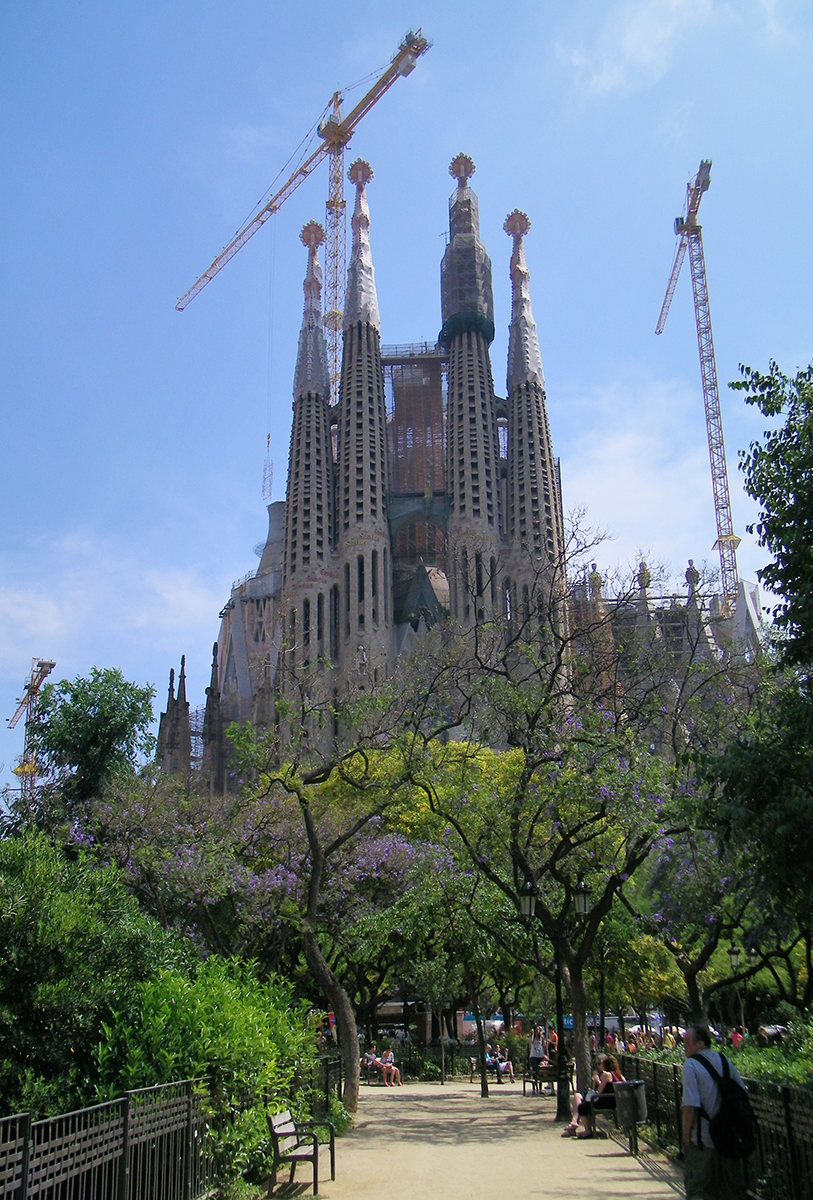
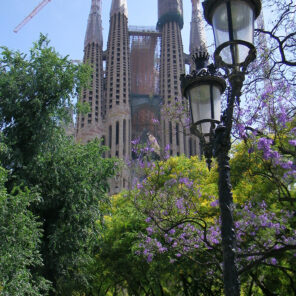

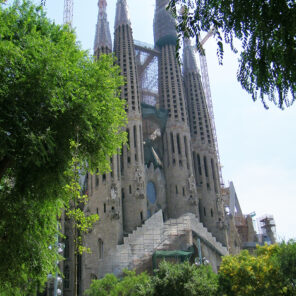
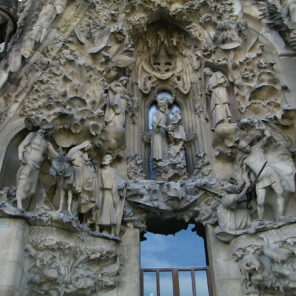
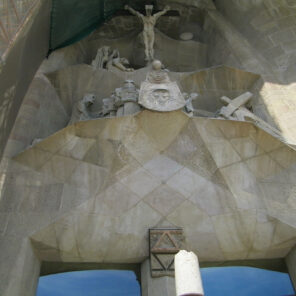
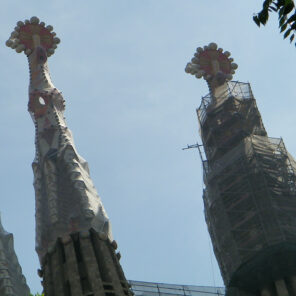


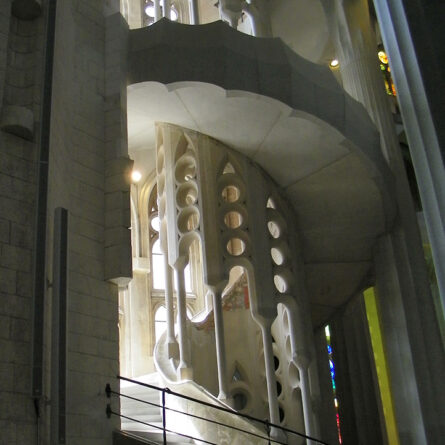
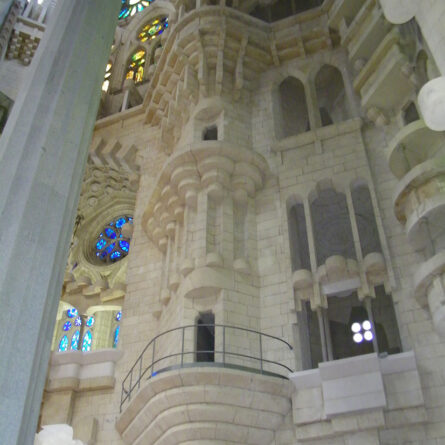

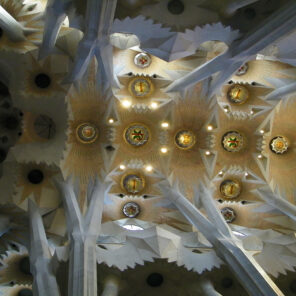
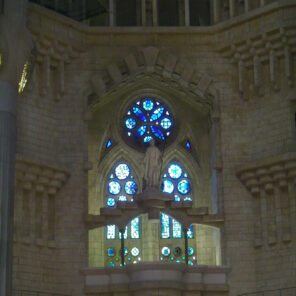

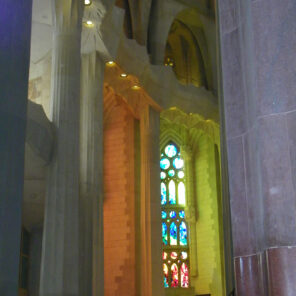
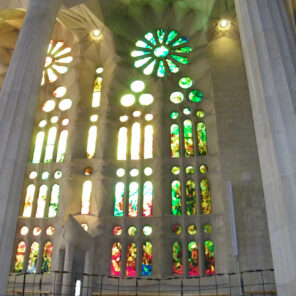
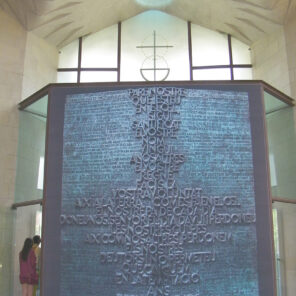
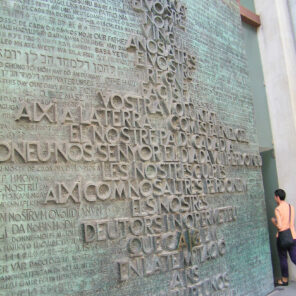
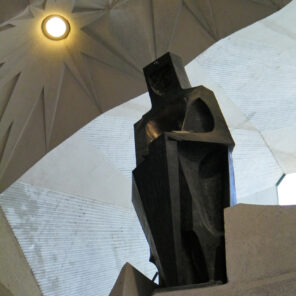
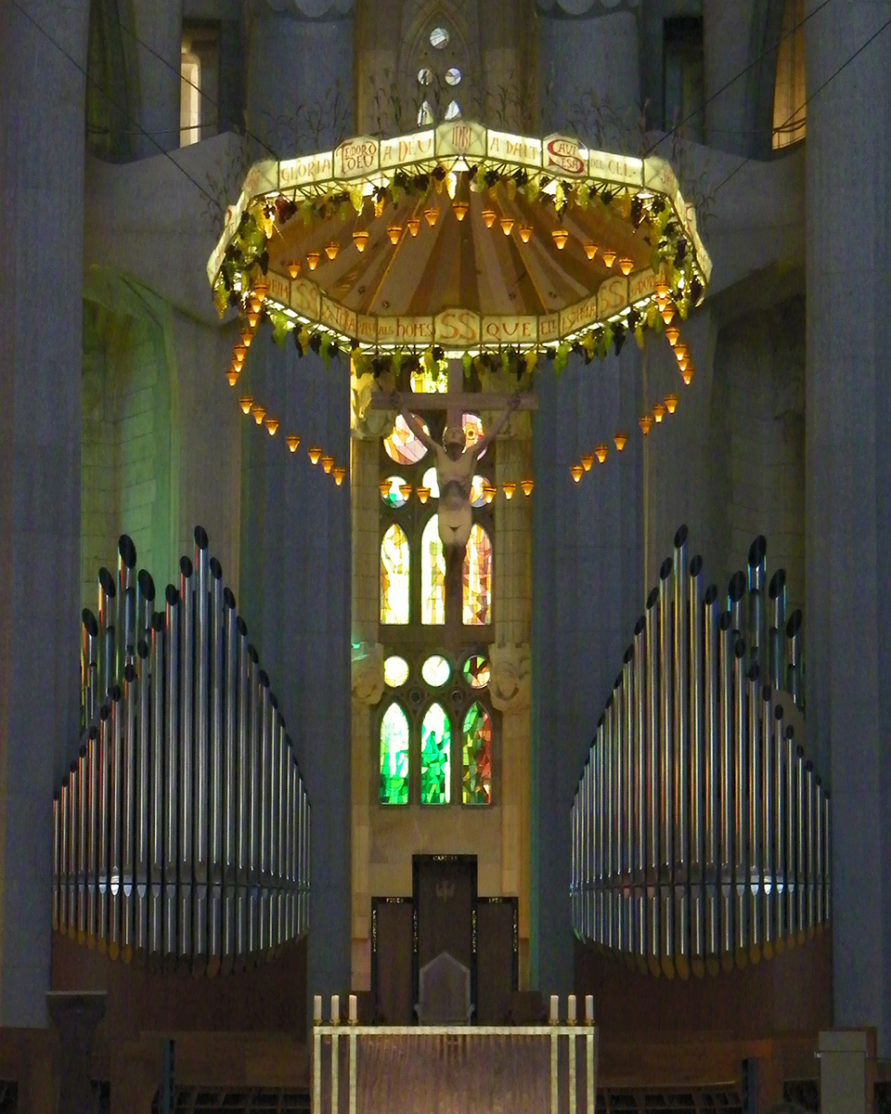

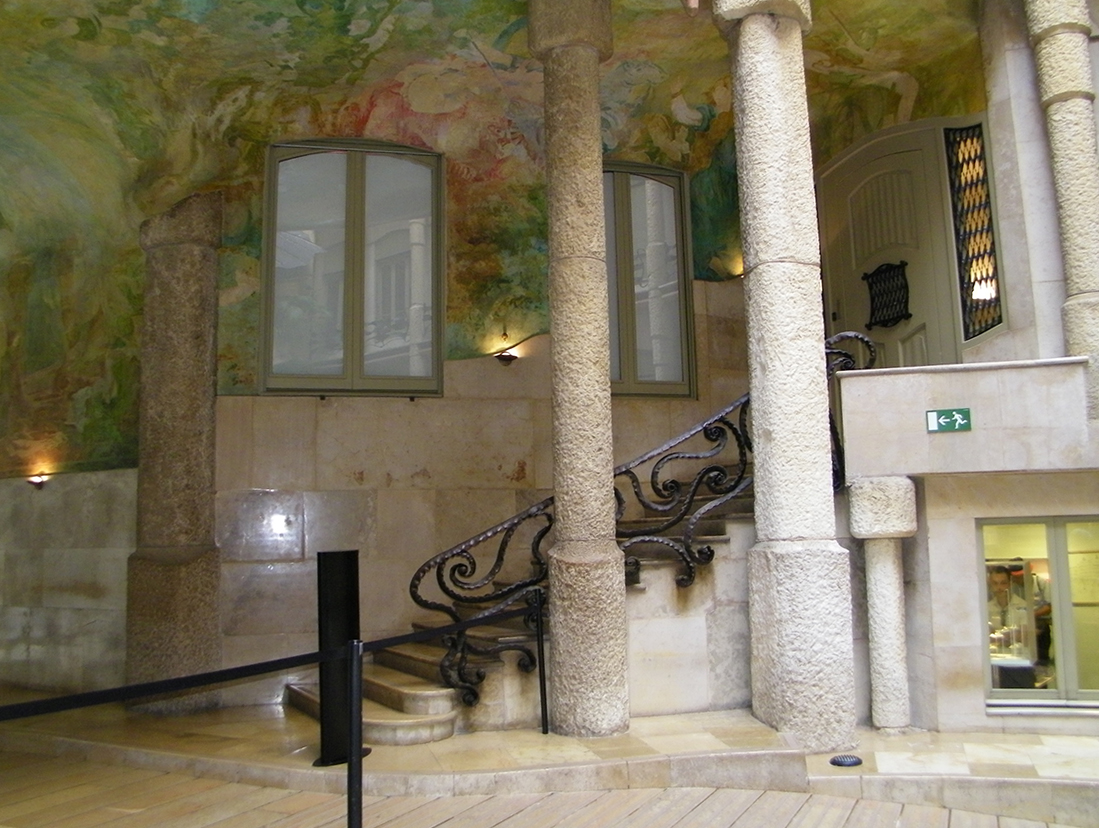
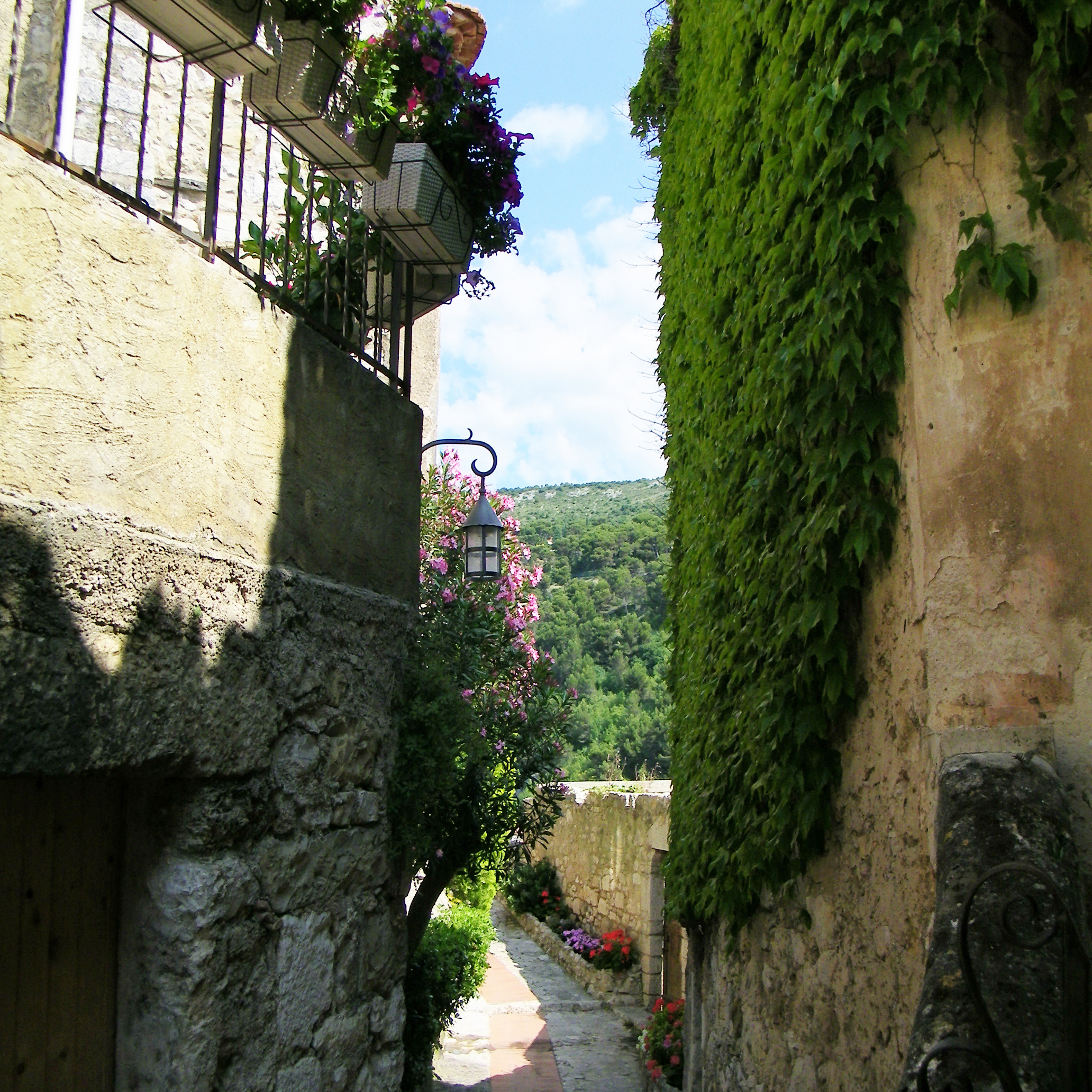
Like I said, I was pinching myself almost every day, because I couldn’t believe we saw it either. We travel a lot, but don’t usually leave the U.S. and to see so many places with so much history, I hope to go somewhere else soon! Are ya ready Laurie?
As I was reading this I was remembering the 60 minutes interview that I saw. I wasn’t sure that this was the same place until you mentioned it. I never knew such a place even existed and you got to see it. How awesome!